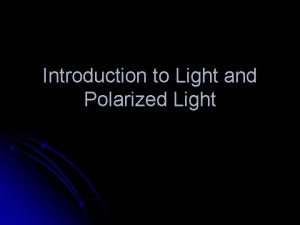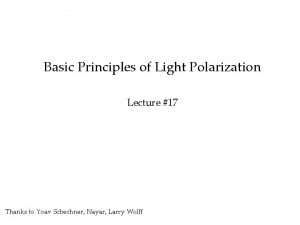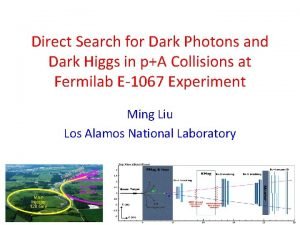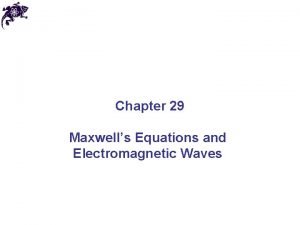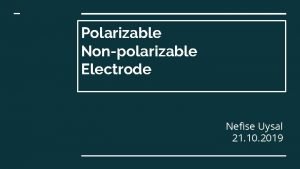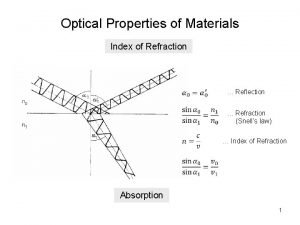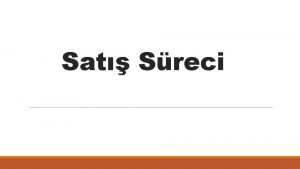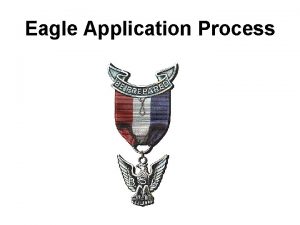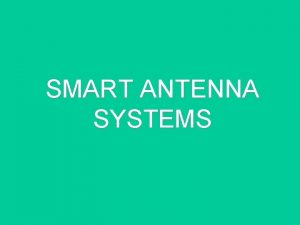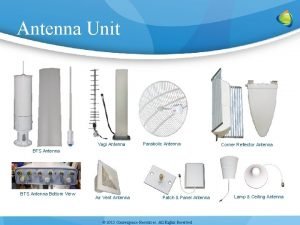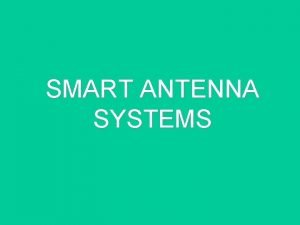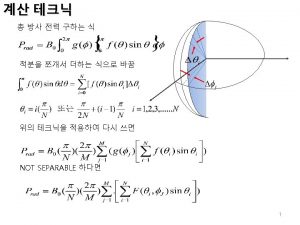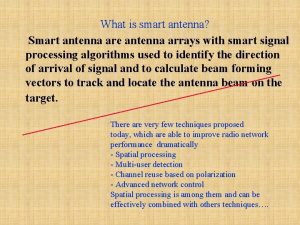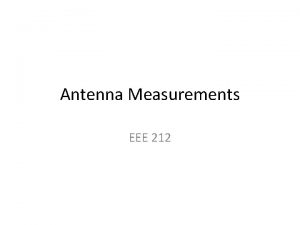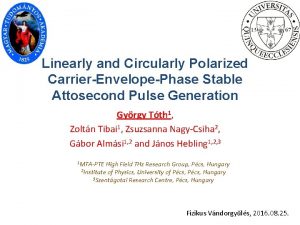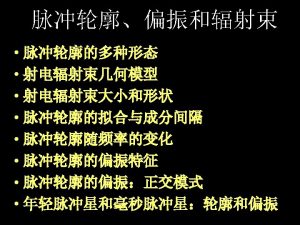Designing a Circularly Polarized Antenna for Eagle Sat














- Slides: 14

Designing a Circularly Polarized Antenna for Eagle. Sat Dadija Bliudzius Embry-Riddle Aeronautical University NASA Space Grant

Overview • Linear versus Circularly Polarized Antenna o Circularly Polarized Antenna • • Antenna Requirements Theory Wire Length Calculations Equipment Program Testing Goals Summary & Conclusion

• Linear versus Circular Antennas Linear Antenna o Can only communicate with other antennas who's waves oscillate in the same plane • Circularly Polarized Antenna o Able to communicate with all antennas o No power loss due to polarization mismatch

Circularly Polarized Antenna • Electromagnetic wave does not change strength, but rotates around a central axis • Divided into two components; at right angles to each other o The vertical components in blue o The horizontal components in green. o The horizontal component leads the vertical component by one quarter of a wavelength

Theory •

Antenna Requirements • • • Transmit and Receive on 436 MHz Fit within 10 x. 16 cm Weigh < 70 g Impedance of 50Ω Connect to a communication board Deploy antennas to a fixed position

Theory (cont. ) • Impedance Matching o Mismatch causes reflection (not all power reaches antenna) • Microstrip design o Calculator to design for 50Ω impedance o Transmission line on top and ground plane on bottom for directional signal • Precise wire length o Phase shifting o Designed for 50Ω impedance o Permittivity Inputs Measurements Trace Thickness (T) 35 um Substrate Height (H) 1. 6 mm Trace Width (W) 3. 31 mm Substrate Dielectric (Er) 4. 25

Wire Length Calculations • Wavelength In Air (cm) In FR 4 PCB (m) ¼ 17. 19 9. 86 ½ 34. 78 19. 72 1 68. 76 39. 44

Equipment • Printed Circuit Board o FR 4 Material o Low permittivity • Antenna o Tape measure o Flexible, metal, easy and cheap to acquire • Power splitter o Delays the signal by ¼ wavelength • Coax o Connects between boards • SMA Connecter o Test the phase shifting

Program: Diptrace • • Designs the entire PCB Pads for connectors Pads for antennas Mounting holes

Program: Matlab • Examines radiation pattern o Directional dependence of the strength of the radio waves • Currently looking at an omnidirectional antenna • Plot the radiation pattern when finished building

Testing • Network analyzer o Tests and maps out the phase shifting • GPS Antenna on a balloon launch o April 10, 2014 o Tests the clarity of signal • HASP o August 2014 o Examining the antenna’s transmissions and interactions with other subsystems • Testing different scenarios o Vacuum chamber

Conclusion & Summary • Antenna development slow • Should be able to meet deadlines • Future work: o Expand antenna knowledge o Create a flight-ready antenna o Become more familiar with radiation pattern

Acknowledgements • • Jack Crabtree Dr. Post Dr. Yale NASA Space. Grant & interns
 Light definition
Light definition Polarized wave
Polarized wave Polarized pluralist model
Polarized pluralist model Photo search
Photo search Brain homunculus
Brain homunculus A polarizer blocks 75% of a polarized light beam.
A polarizer blocks 75% of a polarized light beam. Ideally polarizable electrode
Ideally polarizable electrode Index of refraction formula
Index of refraction formula Smärtskolan kunskap för livet
Smärtskolan kunskap för livet Novell typiska drag
Novell typiska drag Luftstrupen för medicinare
Luftstrupen för medicinare Frgar
Frgar Teckenspråk minoritetsspråk argument
Teckenspråk minoritetsspråk argument Humanitr
Humanitr Vilka tal pekar pilarna på
Vilka tal pekar pilarna på
